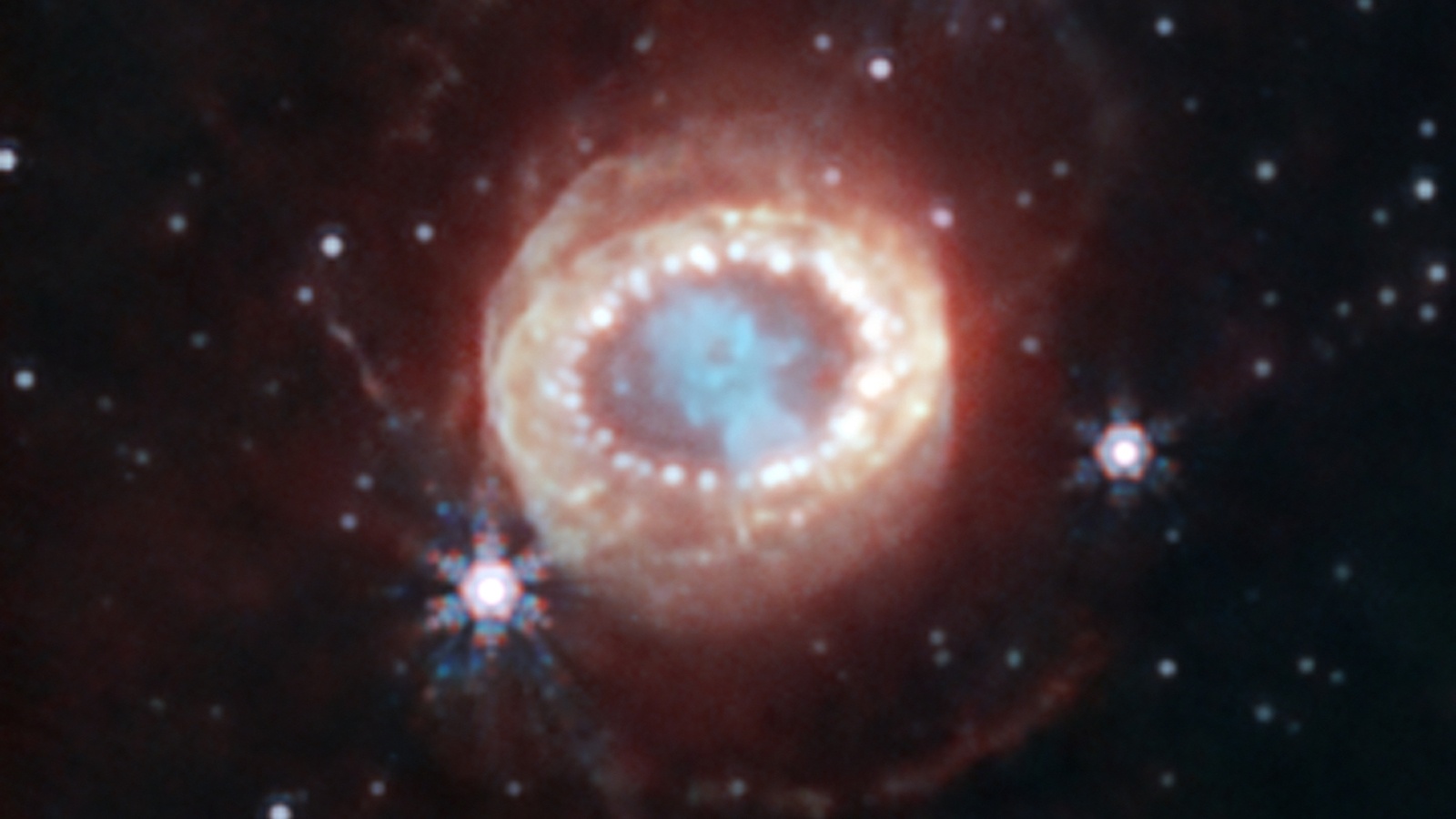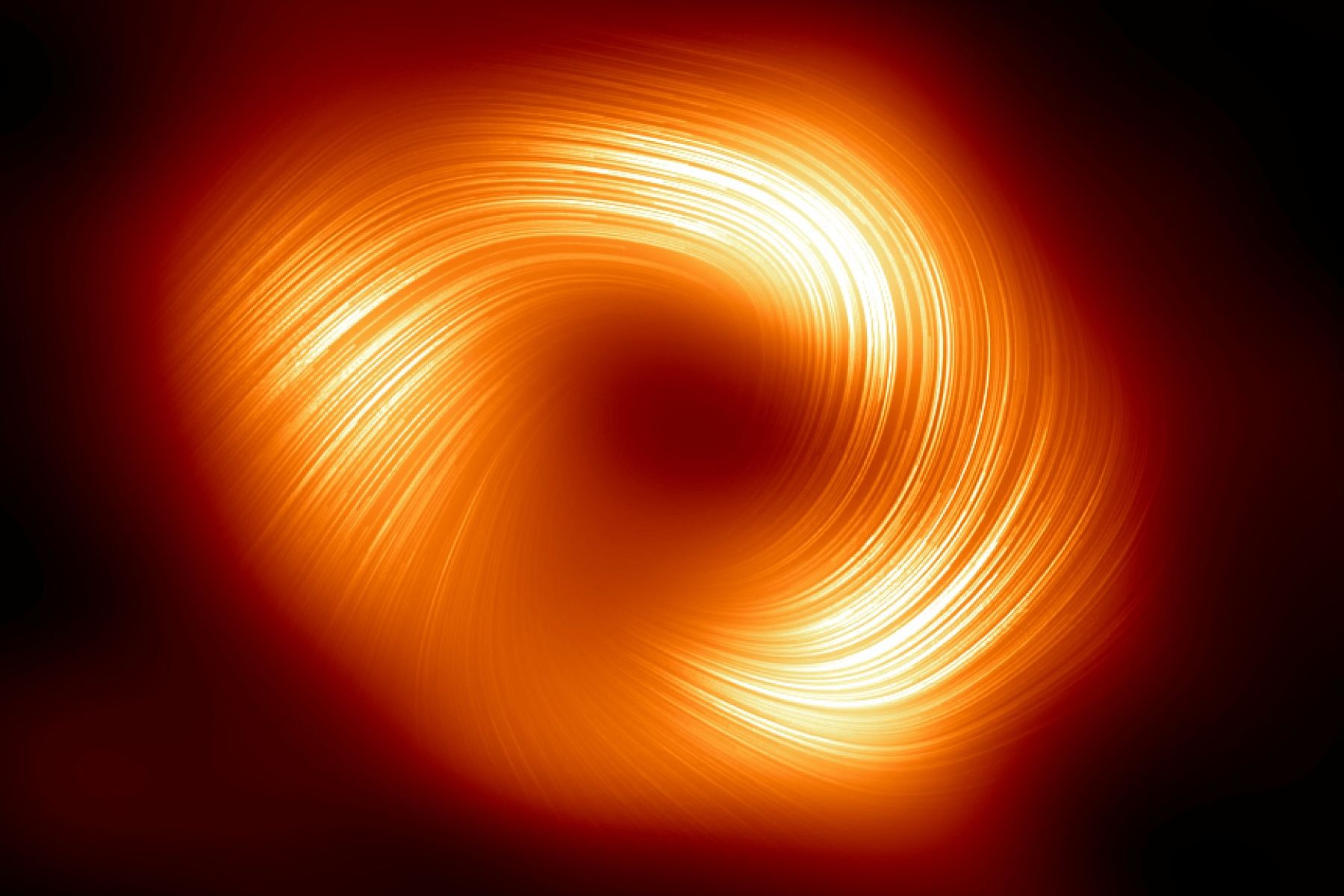The traditional theory of black hole formation seems to struggle to explain how black holes can merge into larger more massive black holes yet they have been seen with LIGO. It’s possible that they may have formed at the beginning of time and if so, then they may be a worthy candidate to explain dark matter but only if there are enough of them. A team of researchers recently searched for microlensing events from black holes in the Large Magellanic Cloud but didn’t find enough to account for more than a fraction of dark matter.
Continue reading “LIGO Has Detected Unusual Black Holes Merging, But they Probably Don’t Explain Dark Matter”IceCube Just Spent 10 Years Searching for Dark Matter
Neutrinos are tricky little blighters that are hard to observe. The IceCube Neutrino Observatory in Antarctica was built to detect neutrinos from space. It is one of the most sensitive instruments built with the hope it might help uncover evidence for dark matter. Any dark matter trapped inside Earth, would release neutrinos that IceCube could detect. To date, and with 10 years of searching, it seems no excess neutrinos coming from Earth have been found!
Continue reading “IceCube Just Spent 10 Years Searching for Dark Matter”Using Jupiter as a Dark Matter Detector

The nature of dark matter has been a hotly debated topic for decades. If it’s a heavy, slow moving particle then it’s just possible that neutrinos may be emitted during interactions with normal matter. A new paper proposes that Jupiter may be the place to watch this happen. It has enough gravity to capture dark matter particles which may be detectable using a water Cherenkov detector. The researchers suggest using a water Cherenkov detector to watch for excess neutrinos coming from the direction of Jupiter with energies between 100 MeV and 5 GeV.
Continue reading “Using Jupiter as a Dark Matter Detector”Could Primordial Black Holes Be Hiding in Plain Sight?
Are Primordial Black Holes real? They could’ve formed in the unusual physics that dominated the Universe shortly after the Big Bang. The idea dates back to the 1960s, but so far, the lack of evidence makes them purely hypothetical.
If they do exist, a new paper suggests they may be hiding in places so unlikely that nobody ever thought to look there.
Continue reading “Could Primordial Black Holes Be Hiding in Plain Sight?”A Nearby Supernova Could Finally Reveal Dark Matter

Despite 90 years of research, the nature and influence of Dark Matter continue to elude astronomers and cosmologists. First proposed in the 1960s to explain the rotational curves of galaxies, this invisible mass does not interact with normal matter (except through gravity) and accounts for 85% of the total mass in the Universe. It is also a vital component in the most widely accepted cosmological model of the Universe, the Lambda Cold Dark Matter (LCDM) model. However, according to new research, the hunt for DM could be over as soon as a nearby star goes supernova.
Currently, the axion is considered the most likely candidate for DM, a hypothetical low-mass particle proposed in the 1970s to resolve problems in quantum theory. There has also been considerable research into how astronomers could detect axions by observing neutron stars and objects with powerful magnetic fields. In a recent study supported by the U.S. Department of Energy, a team of astrophysicists at the University of California Berkeley argued that axions could be discovered within seconds of detecting gamma rays from a nearby supernova explosion.
Continue reading “A Nearby Supernova Could Finally Reveal Dark Matter”Axion Dark Matter May Make Spacetime Ring

Dark matter made out of axions may have the power to make space-time ring like a bell, but only if it is able to steal energy from black holes, according to new research.
Continue reading “Axion Dark Matter May Make Spacetime Ring”Detecting Primordial Black Hole Mergers Might be Within Our Grasp
Imagine a black hole with the mass of the asteroid Ceres. It would be no larger than a bacterium and practically undetectable. But if such black holes are common in the Universe, they would affect the motions of stars and galaxies, just as we observe. Perhaps they are the source of dark matter.
Continue reading “Detecting Primordial Black Hole Mergers Might be Within Our Grasp”Neutron Stars May be Shrouded in Extremely Light Particles Called Axions

Since the 1960s, astronomers have theorized that the Universe may be filled with a mysterious mass that only interacts with “normal matter” via gravity. This mass, nicknamed Dark Matter (DM), is essential to resolving issues between astronomical observations and General Relativity. In recent years, scientists have considered that DM may be composed of axions, a class of hypothetical elementary particles with low mass within a specific range. First proposed in the 1970s to resolve problems in the Standard Model of particle physics, these particles have emerged as a leading candidate for DM.
In addition to growing evidence that this could be the case, researchers at CERN are developing a new telescope that could help the scientific community look for axions – the CERN Axion Solar Telescope (CAST). According to new research conducted by an international team of physicists, these hypothetical particles may occur in large clouds around neutron stars. These axions could be the long-awaited explanation for Dark Matter that cosmologists have spent decades searching for. What’s more, their research indicates that these axions may not be very difficult to observe from Earth.
Continue reading “Neutron Stars May be Shrouded in Extremely Light Particles Called Axions”Dark Matter Has a Firm Grip on These Galaxies

The elliptical galaxy NGC 1270 lies about 240 million light-years away. But it’s not alone. It’s part of the Perseus Cluster (Abell 426), the brightest X-ray object in the sky and one of the most massive objects in the Universe.
NGC 1270 plays a starring role in a new image from the Gemini North telescope. However, the image doesn’t show the dark matter that has a firm grip on the galaxy and the rest of the galaxies in the Perseus Cluster.
Continue reading “Dark Matter Has a Firm Grip on These Galaxies”Dark Matter Could a Have Slight Interaction With Regular Matter
The reason we call dark matter dark isn’t because it’s some shadowy material. It’s because dark matter doesn’t interact with light. The difference is subtle, but important. Regular matter can be dark because it absorbs light. It’s why, for example, we can see the shadow of molecular clouds against the scattered stars of the Milky Way. This is possible because light and matter have a way to connect. Light is an electromagnetic wave, and atoms contain electrically charged electrons and protons, so matter can emit, absorb and scatter light. Dark matter isn’t electrically charged. It has no way to connect with light, and so when light and dark matter meet up they simply pass through each other.
Continue reading “Dark Matter Could a Have Slight Interaction With Regular Matter”



